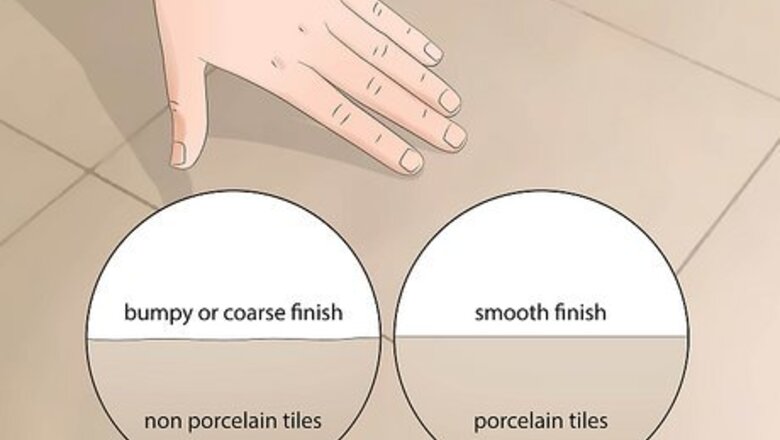
views
X
Research source
Identifying Loose Tiles
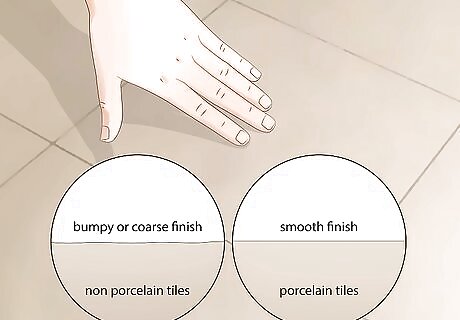
Inspect the tiles’ finish to see how smooth it is. You can do this either by visually inspecting the tiles’ top surfaces or by running your fingers over the top of the tiles. Porcelain tiles have a fine-grained finish that is smoother than the finish on ceramic tiles. So, if the finish is slightly bumpy or coarse when you touch it, you’re dealing with non-porcelain (ceramic) tile. If the tiles are already glazed, flip them over and look at the unglazed underside.
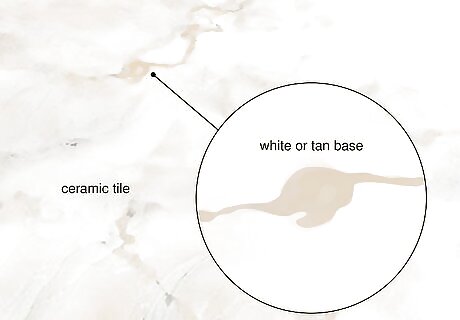
Look for chips in the glaze to identify ceramic tile. Look closely at the glaze: if it’s chipped, you will be able to see the tile’s white or tan base. This is a sure sign that the tile is ceramic. Porcelain tiles are sometimes, but not always, glazed. Most high-quality porcelain tiles will have a consistent color that goes through the top, body, and bottom of the tile. Ceramic tiles, on the other hand, are nearly always glazed. Glazed porcelain tiles are much harder and are more resistant to wear and damage than non-porcelain ceramic tiles.
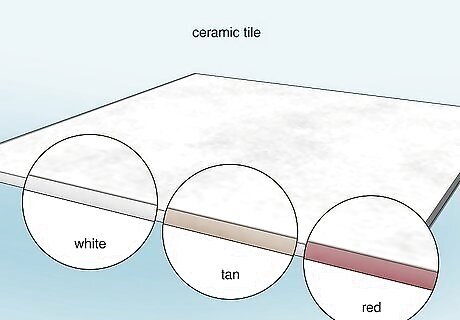
Examine the sides of the tile for a white, tan, or red color. While porcelain tiles can be colored, ceramic tiles will always have a white, tan, or red color, with a colored glaze on top. So, if you see that the sides (and base) of the tile are any other color other than white, tan, or red, you can be sure that you’re dealing with a porcelain tile. Some cheap, low-quality porcelain tiles may not have the color mixed through the body of the tile. Avoid purchasing these tiles.
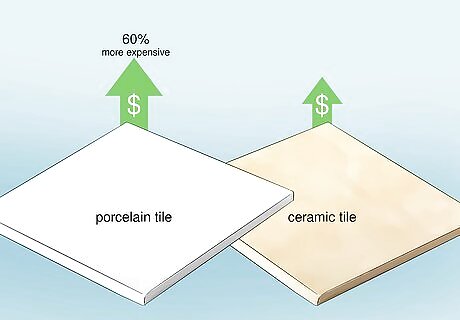
Compare the costs of the two tile types. In nearly every scenario, porcelain tiles are more expensive than ceramic tiles: they take more time to produce, are more versatile, and tend to last longer. If you’re looking at two types of tiles in a hardware or home-supply store, non-porcelain (ceramic) tiles will be a little cheaper. As a broad rule of thumb, porcelain tile usually costs approximately 60% more than ceramic tile.
Identifying Already-Installed Tiles
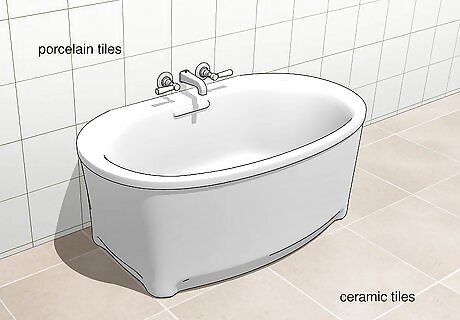
Note the location in which the tiles have been installed. Ceramic and porcelain tiles are each better suited to distinct locations in a home. Porcelain is often installed in laundry rooms, bathroom floors, bathroom walls, shower stalls, and around bathtubs. Porcelain tile is more durable than ceramic because of its hardness, and porcelain is also more resistant to moisture. Ceramic tile, on the other hand, is most often installed as flooring in high-traffic areas such as an entry way or a heavily-used hallway.

See if the tiles are stained or discolored. If so, they’re almost certainly ceramic. Porcelain tiles are very dense and have been designed to be impervious to stains. So, most staining substances (e.g., red wine) can be wiped off of them easily. Ceramic, on the other hand, is light, porous, and can absorb staining materials relatively easily. Stains on ceramic tiles could also come from foot traffic (dirt, mud, snow, etc.) if the tiles are located in an entryway.
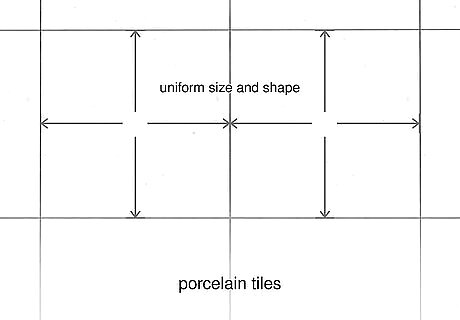
Inspect the faces of the tiles for uniform size and shape. The “face” of the tile is the top portion which faces upward or outward on installed tiles. Porcelain tiles have sharply-formed faces which are all exactly uniform in size. Due to their durability, porcelain tiles can be “rectified,” or cut to highly specific dimensions for complete uniformity. This also allows the porcelain tiles to be grouted together with only small gaps between tiles. If there is any discrepancy between the size of the tiles, you’re dealing with ceramic tile.

















Comments
0 comment